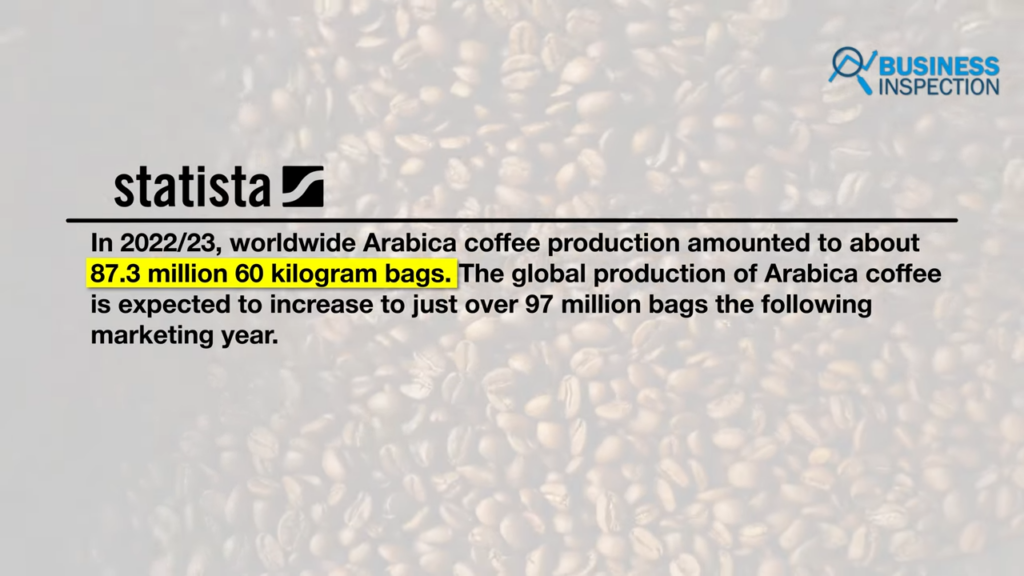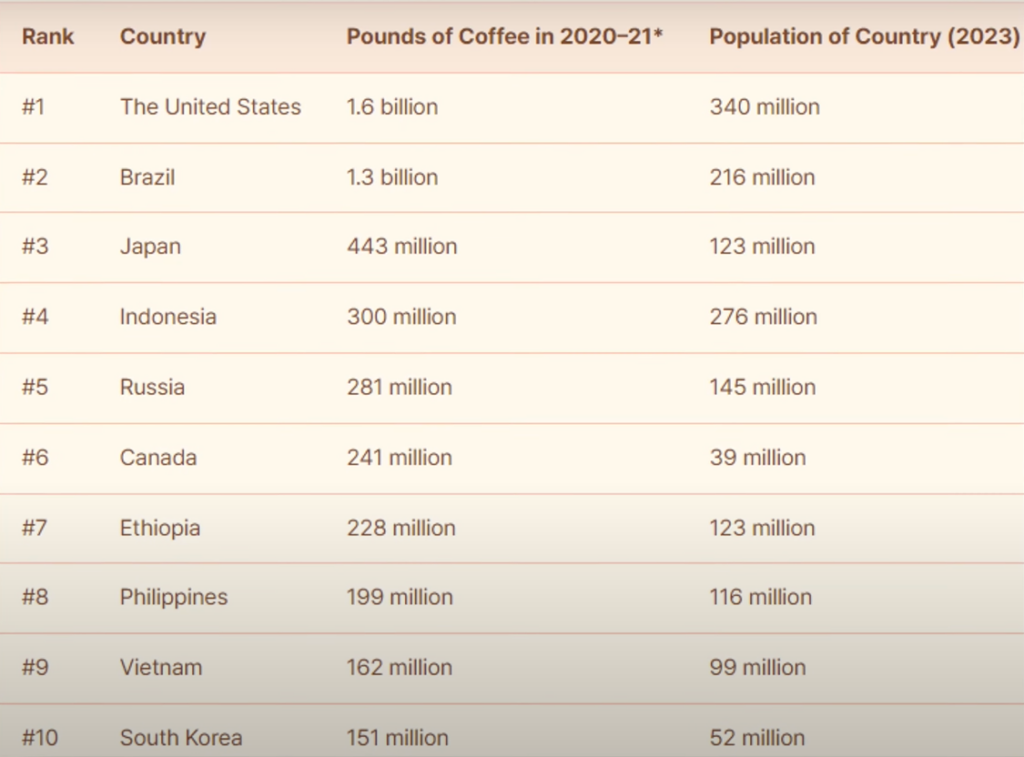Coffee – a beverage that many of us cannot start our day without. It’s more than just a drink; it’s a global phenomenon, deeply ingrained in cultures, economies, and daily routines across the world. From its humble beginnings to becoming a $100 billion industry, coffee has a fascinating story to tell. Let’s dive into the chronicles of coffee, exploring how a simple bean transformed into the world’s most beloved beverage, second only to water.
Role of Coffee in Modern Life
Coffee powers the modern world, and it is consumed at a staggering rate of over 2 billion cups daily! Europeans alone drink 2.5 million tonnes annually, which is equivalent to the weight of 25,000 blue whales. The coffee industry itself is a $100 billion global force, which flourishes in cafés from Italy to Australia.
From goats in Africa to the Boston Tea Party of 1773, coffee’s influence is undoubtedly vast! What links these events is the coffee cherry, a fruit that changed history and society. You can’t deny coffee eases our daily routines, and it is the second most traded commodity after oil. There’s a high possibility that many can’t even imagine life without it. What’s the reason behind such ubiquitous influence? That’s what we will wrap our heads around today!
If you ask any coffee lovers, they would say it’s more than a beverage. In fact, it’s a daily ritual for many, with some drinking 3 to 4 cups a day. This extraordinary drink has not only shaped our lives but also the course of history.
The Rise of Coffee
Imagine waking up to the rich aroma of freshly brewed coffee – it’s a sensation that many of us cherish. This daily ritual is more than just about waking up; it’s about starting the day on the right note. But have you ever wondered how coffee became such an integral part of our lives?
Legend has it that coffee’s discovery was accidental. The story goes that an Ethiopian goat herder named Kaldi noticed his goats becoming unusually energetic after eating red coffee berries. Curious, Kaldi tried the berries himself and experienced the same burst of energy. This discovery quickly spread, and by the mid-15th century, coffee was being cultivated and consumed in Yemen. From there, coffee’s popularity spread across the Middle East, Persia, Turkey, and Northern Africa, eventually making its way to Europe.

The Birth of Coffeehouses & Taking Over Europe
As coffee made its way to Europe, it faced resistance. In Venice, when coffee arrived in 1615, it was condemned by the clergy as the “bitter invention of Satan.” However, Pope Clement VIII decided to try it himself and, finding it delightful, gave it his blessing. This endorsement allowed coffee to spread across Europe, where it quickly became a staple.
Coffeehouses began to pop up across major cities, serving as social hubs where people gathered to discuss politics, philosophy, and business. In England, these coffeehouses were known as “penny universities” because, for just a penny, patrons could buy a coffee and engage in intellectual discussions. By the mid-17th century, London alone had over 300 coffeehouses, frequented by merchants, brokers, and artists.
Coffee’s Global Expansion
Coffee’s influence extended far beyond Europe. In Turkey, coffee became so popular that Sultan Murad IV banned public coffee drinking, fearing it would spread rebellious ideas. Despite the ban, people continued to enjoy coffee in secret, and the beverage only grew in popularity. In America, coffee became a symbol of defiance during the Boston Tea Party in 1773, marking the beginning of America’s enduring love affair with the drink.
As the Industrial Revolution took hold, coffee became the drink of choice for workers, providing the stimulation needed to endure long hours in factories. The American diner, a cultural symbol, served coffee around the clock, ensuring that workers always had access to their beloved cup of Joe.

The Science Behind the Brew: From Bean to Cup
But what makes coffee so special? The answer lies in the coffee bean itself and the complex process it undergoes before it reaches our cups. Coffee grows best in subtropical and equatorial regions, where it is cultivated in over 80 countries worldwide. The journey from bean to cup involves several stages, each contributing to the final flavor of the coffee.
The three main methods of processing coffee beans – washing, natural drying, and pulp natural – all impart different flavors to the coffee. However, the most critical stage is roasting. During roasting, the chemical structure of the beans changes, releasing the flavors and aromas that coffee lovers crave. This is a delicate process, with each roaster guarding their methods to achieve the perfect roast.
The Environmental Impact
While coffee brings joy to millions, its production and consumption have significant environmental impacts. The global demand for coffee leads to extensive farming, often in environmentally sensitive areas. Additionally, the widespread use of disposable coffee cups contributes to pollution. Shockingly, around 16 billion disposable cups are used each year, most of which are not recyclable due to their plastic lining. This has led to growing awareness of the need for sustainable practices, with many consumers now opting for reusable cups.
Coffee and Health
Coffee is not just about taste and culture; it also has profound effects on our health. Research suggests that moderate coffee consumption can protect against certain diseases, including liver disease and dementia. However, excessive consumption can lead to health risks such as increased heart disease and insomnia. The caffeine in coffee is a stimulant that can enhance alertness and concentration, but it can also lead to dependency and withdrawal symptoms.
The Future of Coffee
As we enjoy our daily cup of coffee, it’s important to consider the future of this beloved beverage. Climate change poses a significant threat to coffee production, with studies indicating that 60% of coffee species are at risk of extinction. This could have devastating effects on the economies of coffee-producing countries and on the global coffee industry as a whole.
In response, initiatives like World Coffee Research are working to develop new coffee varieties and sustainable farming methods to ensure that coffee remains a part of our lives for generations to come.
Wrapping Up
Coffee’s journey from a mysterious berry in Ethiopia to a global phenomenon is nothing short of remarkable. It has shaped cultures, influenced economies, and become an essential part of daily life for billions of people. Whether you enjoy a double-shot espresso, a creamy latte, or a simple cup of instant coffee, there’s no denying that coffee holds a special place in our hearts and in our cups.
So, the next time you brew a cup of coffee, take a moment to appreciate the rich history and complex journey that brought it to you. Sip slowly, savor the flavor, and remember that with each cup, you’re part of a global tradition that spans centuries.







